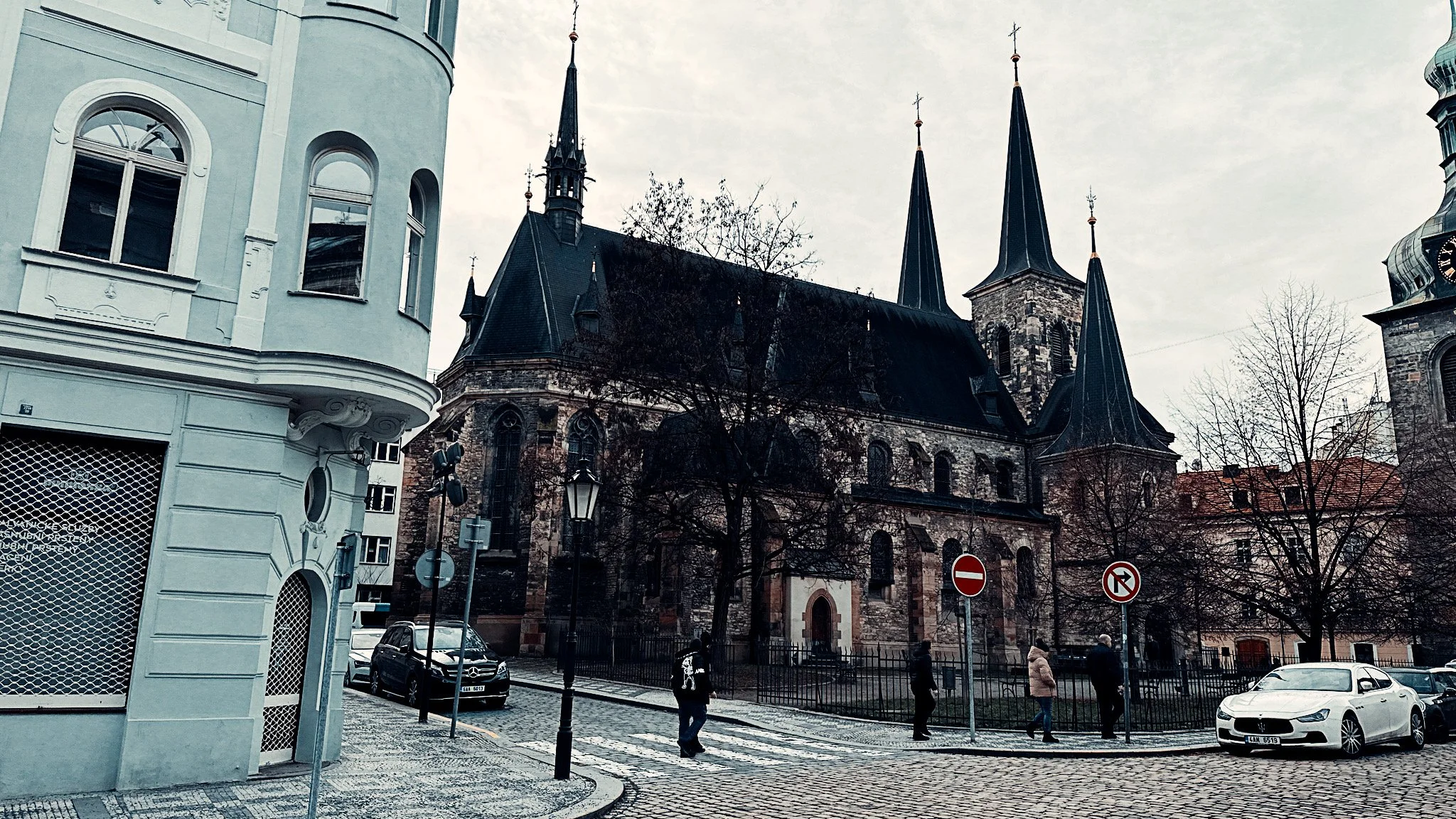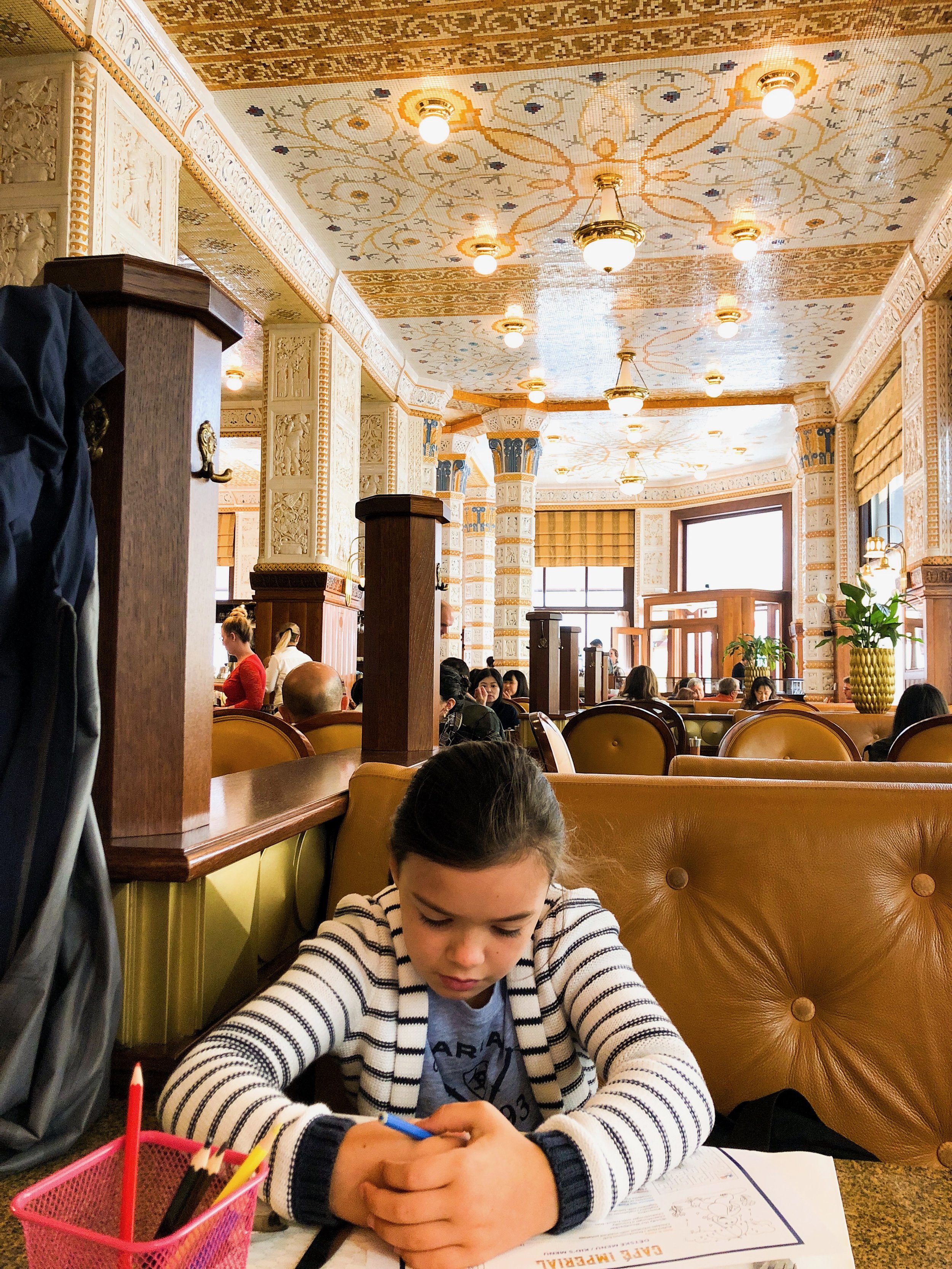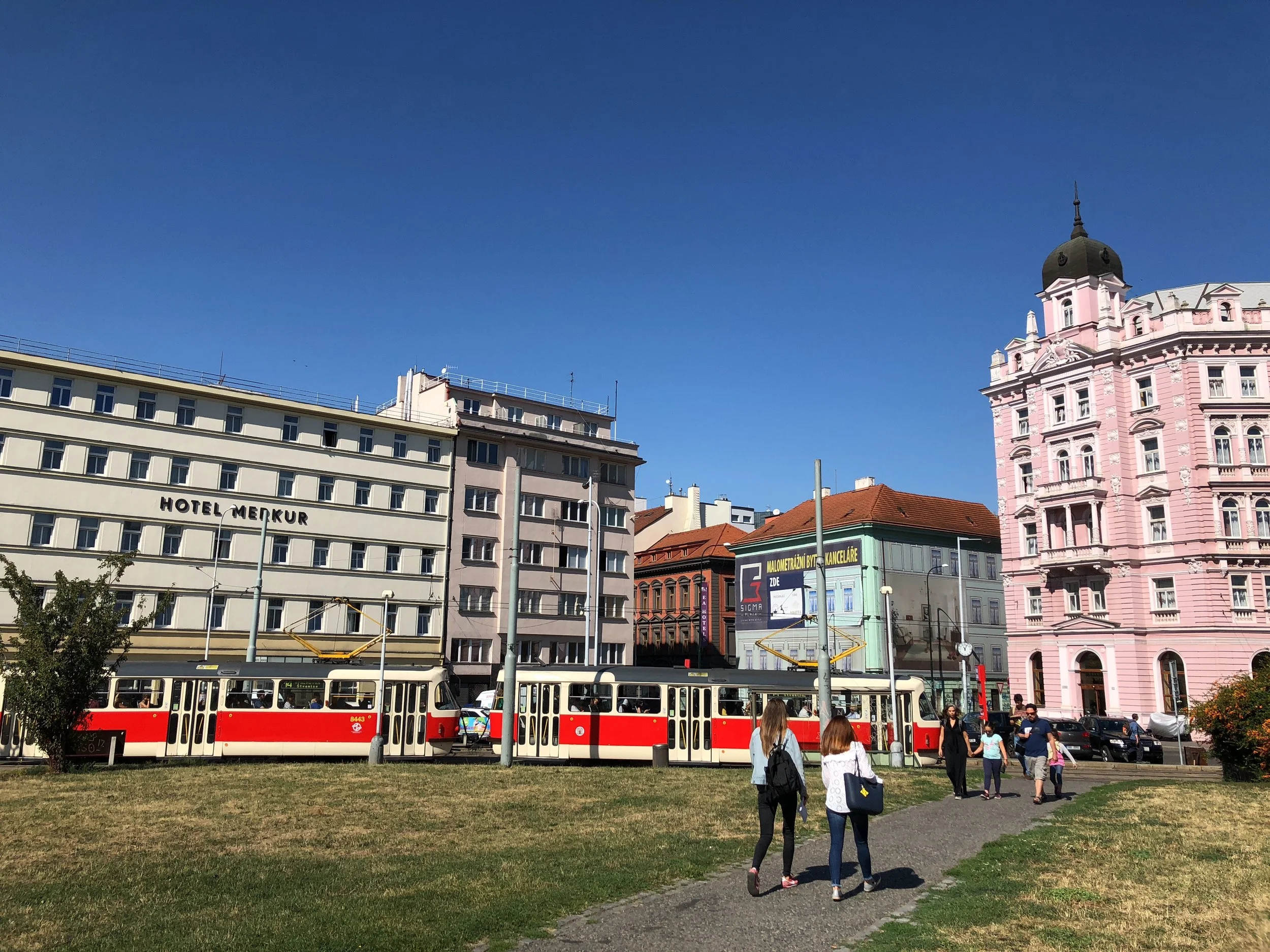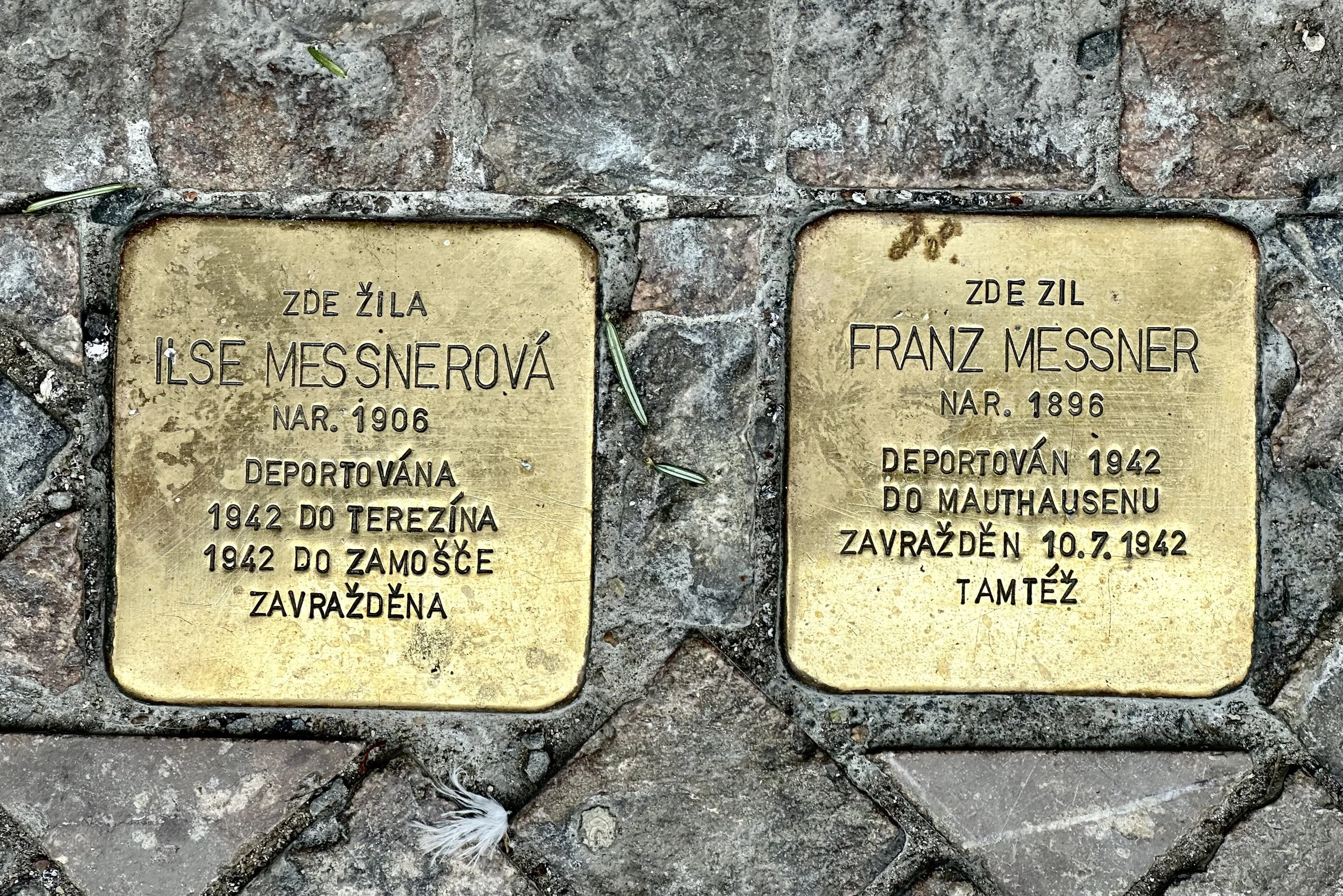A Stroll Through the Petrská Quarter
Step outside our front door on Petrská and you’re already in the middle of one of Prague’s oldest neighborhoods. This corner of the city has been settled since the Middle Ages, and every street holds traces of Prague’s layered past, from medieval churches to modernist landmarks. Follow this Google map for a walk through the neighborhood. Also check out Ian Willoughby’s walk through Petrská with writer Evan Rail, who also calls the neighborhood home.
Just across the street, the rectory known as Fara u sv. Petra stands as a graceful example of 19th-century neo-Renaissance architecture. It quietly anchors náměstí Petrské, the square that gives the neighborhood its name.
At the center of the square is the Church of St. Peter, a Gothic structure originally built in the 12th century. It’s one of Prague’s lesser-known but oldest churches. Next to it stands Peter’s Tower, once part of the city's fortifications.
From here, it’s a short walk west down Novomlýnská Street to reach the Novomlýnská Water Tower. This Baroque structure was built in 1658 to protect the Old Town from flooding. Today it serves as a small museum, and if you climb to the top, you’ll be rewarded with views across the rooftops of Petrská.
Next door is the Vávrův dům, once the residence of the miller whose livelihood depended on those nearby waters. Today, the building houses the Czech Postal Museum.
Winding south along Klimentská Street, you’ll find the Church of St. Clement, originally Romanesque-Gothic but transformed in the early Baroque style.
Head toward Na Poříčí and you’ll find yourself amid the energy of Prague’s First Republic era. The YMCA Palace at number 12 was one of the city’s most ambitious interwar projects, combining athletic, social, and cultural life under one roof. The rooftop gym and old-school elevator still operate.
A children’s ride outside of the Bila Labut department store.
Right next door is the Archa Theatre, a contemporary performance venue housed in a modernist building with a history of political and artistic ferment. And across the street, the sleek curves of Bílá Labuť (the White Swan) shine with 1930s flair. When it opened, it was the most advanced department store in Czechoslovakia.
A few doors down sits the Imperial Hotel, an Art Deco jewel with a truly unforgettable lobby. The tile mosaics and marble detailing are dazzling, even by Prague’s high standards.
Continue toward náměstí Republiky, and you’ll find the Church of St. Joseph and the adjoining Capuchin Monastery. Hidden just steps from the Palladium shopping mall.
Inside the Imperial Hotel, a favorite for breakfast.
If you still have time and energy, head north past the imposing 1930s buildings of the Ministry of Agriculture and Ministry of Transport, which flank the route to Těšnov Park. This green space sits on the site of the old Prague-Těšnov railway station, a grand 19th-century terminal demolished during the Communist era to make way for the North-South Highway.
Loop back through the quiet streets of Biskupská or Truhlářská and finish where you began with a deeper appreciation for the Petrská quarter’s quiet charm.
Park Těšnov, our front yard.
Finally, look down.
Scattered around Petrská and throughout Prague, you’ll notice small brass plaques embedded in the street. These are called Stolpersteine—“stumble stones.” Each one marks the last freely chosen residence of someone who was deported from that address during the Nazi occupation between 1938 and 1944.
The idea began in 1992, when German artist Gunter Demnig installed the first plaque in Cologne to mark the route where Roma had been deported. The stones are placed in the ground—rather than on building façades—because city permission is easier to obtain than that of individual property owners. They are designed to be “stumbled upon,” quietly reintroducing the memory of those lost back into the neighborhoods they once called home.
Stumble stones outside our Petrská flat.
The project became official in 1996, and today more than 100,000 Stolpersteine have been installed in 28 countries across Europe, making it the largest decentralized memorial in the world. In Prague, the first stones were laid in 2008. While many commemorate Jewish victims of the Holocaust, others honor Roma and Sinti, homosexuals, political prisoners, the mentally ill, Jehovah’s Witnesses, and anyone targeted by Nazi persecution.
Each plaque begins with “Zde žil” or “Zde žila” (“Here lived”), followed by the name, year of birth, date and place of deportation, and often the fate—“Zavražděn” (murdered) or “Osvobozena” (freed). Look closely, and you may see family connections: husbands and wives, children, siblings. A woman's maiden name is often marked “roz.” (short for rozená). Sometimes, there are stones for survivors—those who returned after war or emigrated under duress.
In a city so full of grand monuments and sweeping historical gestures, these quiet reminders are among the most powerful. As you walk these streets, they ask only that you remember.






